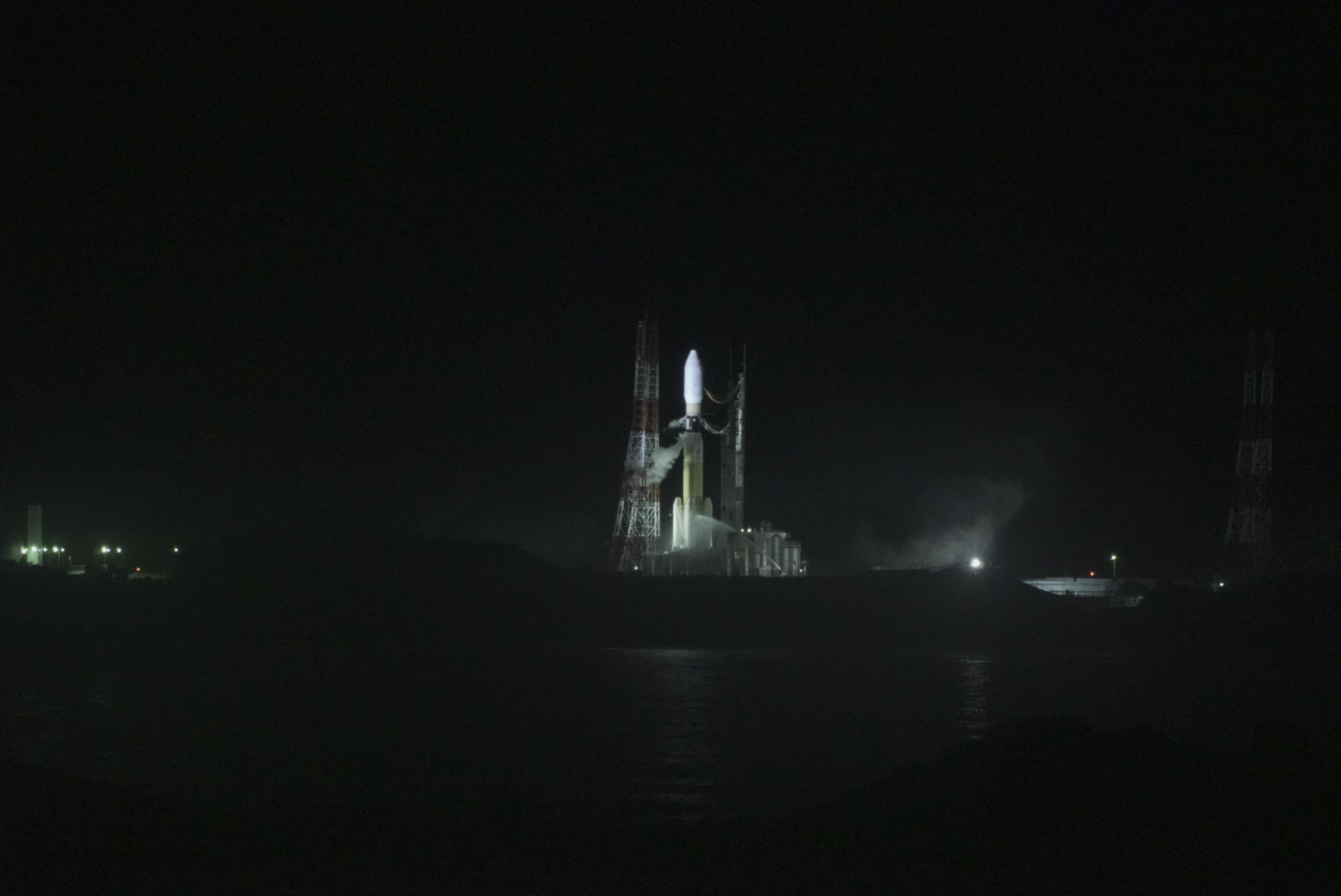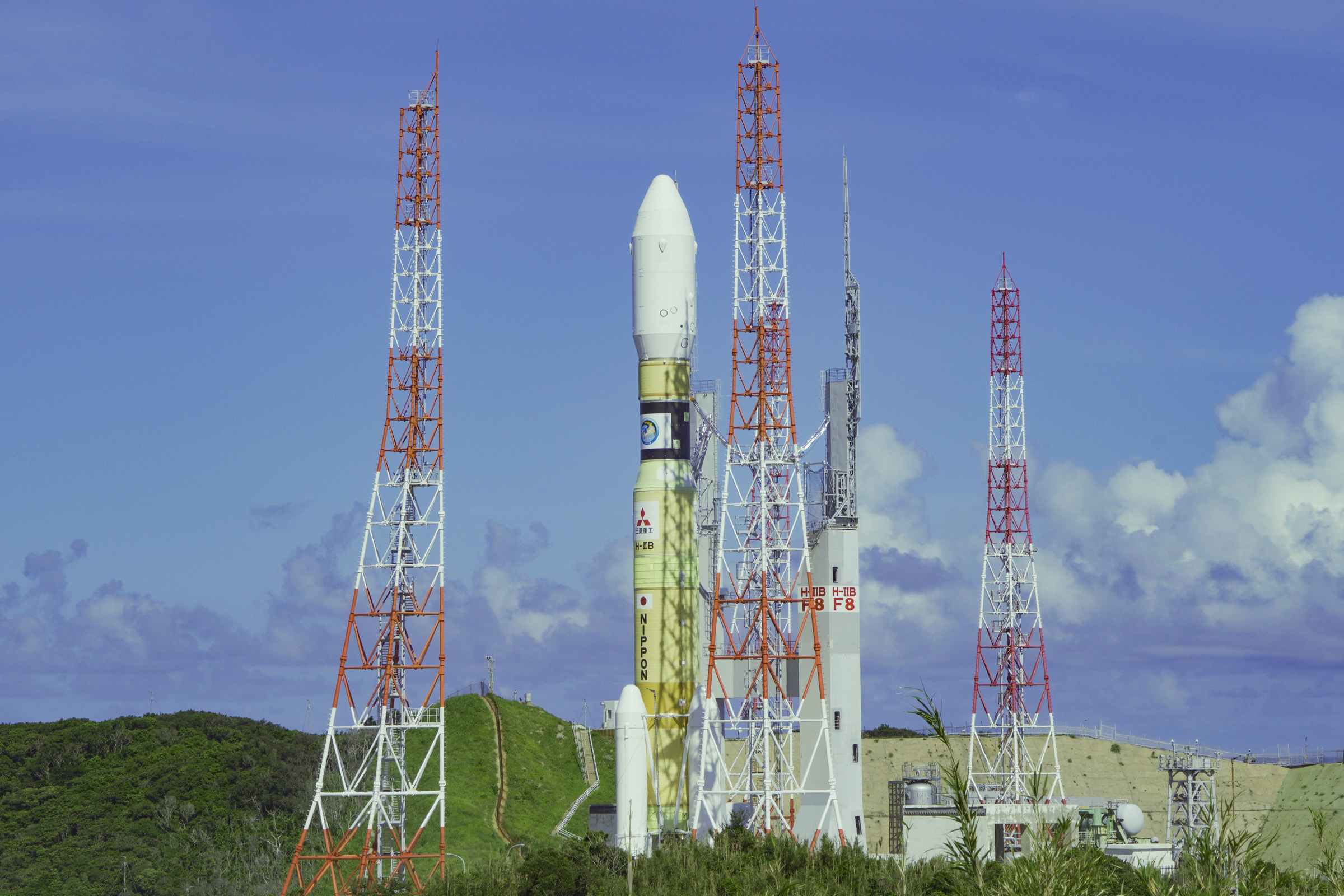During a press conference held just after 6 AM JST, Mitsubishi Heavy Industries Launch Director Atsutoshi Tamura and the Director of JAXA’s Tanegashima Space Center Takeshi Fujita detailed what the two partners knew so far about the cause of their aborted HTV-8 mission on Tuesday.
The launch, scheduled to take place at 6:33 AM JST, instead was officially scrubbed at around 4:34 AM JST due to a fire on the mobile launcher upon which the Mitsubishi Heavy Industries H-IIB rocket was sitting ready for launch. The fire began at 3:05 AM JST according to Tamura, and efforts began immediately to extinguish it immediately, with the fire finally being completely put out (as far as JAXA and MHI can tell) by 5:10 AM JST.
So far, all that is known about the fire is that it occurred in a small hole in the platform located between the third and fourth solid propellant boosters, which is designed to provide a venting channel for fire put out by the rocket’s engines when it’s operating normally during launch. This aperture is made of metal, and surrounded by fire retardant materials, which makes it very unlikely for it to catch fire normally. Both Tamura and Fujita confirmed that this specific situation has not happened previously with any prior launches.
The actual cause of the fire remains unknown, and so far, JAXA and MHI staff have not been able to approach the launch vehicle for a closer inspection due to safety considerations. They are confident based on observation from a distance that they’ve succeeded in putting the fire out, and anticipate being able to approach the rocket later today to perform an in-person inspection.
The vehicle was fully fueled when the fire began, but the fuel was quickly siphoned out when the fire was discovered. It’s not yet clear what damage to the launch vehicle has resulted from the incident. The cargo, which included a significant amount of supplies for ISS astronauts, doesn’t initially appear to have been damaged but further inspection will be required, per MHI and JAXA. There isn’t an urgent need for those supplies, however, JAXA confirms.
At the very earliest, the next launch attempt will be September 17, MHI shared, but this date is highly dependent on the results of the investigation into the cause of the fire.
The original article, including updates, follows below.
[Update 09/11/19 4:34 AM JST: JAXA and MHI confirm the launch is scrubbed for today. We’ll find out more at a press conference at 6 AM JST, including whether there is any chance of making an attempt in the backup window.]
[Update 09/11/19 4:07 AM JST: JAXA and MHI confirm that there is a fire on the Mobile Launcher upon which the H-IIB is loaded to roll out to the launch pad. The fire, described as ‘small,’ started at 3:10 AM JST and continues as of this writing at 4:07 AM JST, while attempts are underway to extinguish it, as you can see in the photo captured on site by TechCrunch below. We’ll provide more updates as they become available.]
Mitsubishi Heavy Industries’s Launch Services division is all set to send a crucial cargo payload to the International Space Station from JAXA today. The launch is scheduled for 6:33 AM Japan Standard Time (5:33 PM ET/2:33 PM PT), and will take off from Tanegashima Island, at JAXA’s Tanegashima Space Center.
The rocket used for this launch is the Mitsubishi Heavy Industries (MHI) H-IIB, and this is the eighth flight launch of the H-II Transfer Vehicle (HTV) that MHI designed and built in Japan.
In the H-IIB configuration, the MHI-built rocket that will transport he HTV includes a liquid propellant central core, along with four solid propellant rocket boosters to give it additional life capacity. This particular mission will see the HTV loaded with 5.3 metric tons (just under six U.S. tons) of supplies for the ISS on board in both pressurized and unpressurized cargo containers, which divvy up the total capacity.
One of the crucial pieces of cargo going up is a small satellite deployment device, called “Kibo,” created by the Kyushu Institute of Technology and the National Authority for Remote Sensing and Space Science. It’ll be used to deploy a range of super compact CubeSats also on board, including a propulsion tech demo created by the University of Tokyo and startup Space BD, which is the first company awarded a contract by JAXA to be the commercial operator for deploying smallsats from the ISS via Kibo.
NASA TV will be carrying the launch live via the stream above, with their coverage kicking off around 5 PM ET (2 PM PT/6 AM JST).
Disclosure: MHI covered the travel costs associated with this launch.

